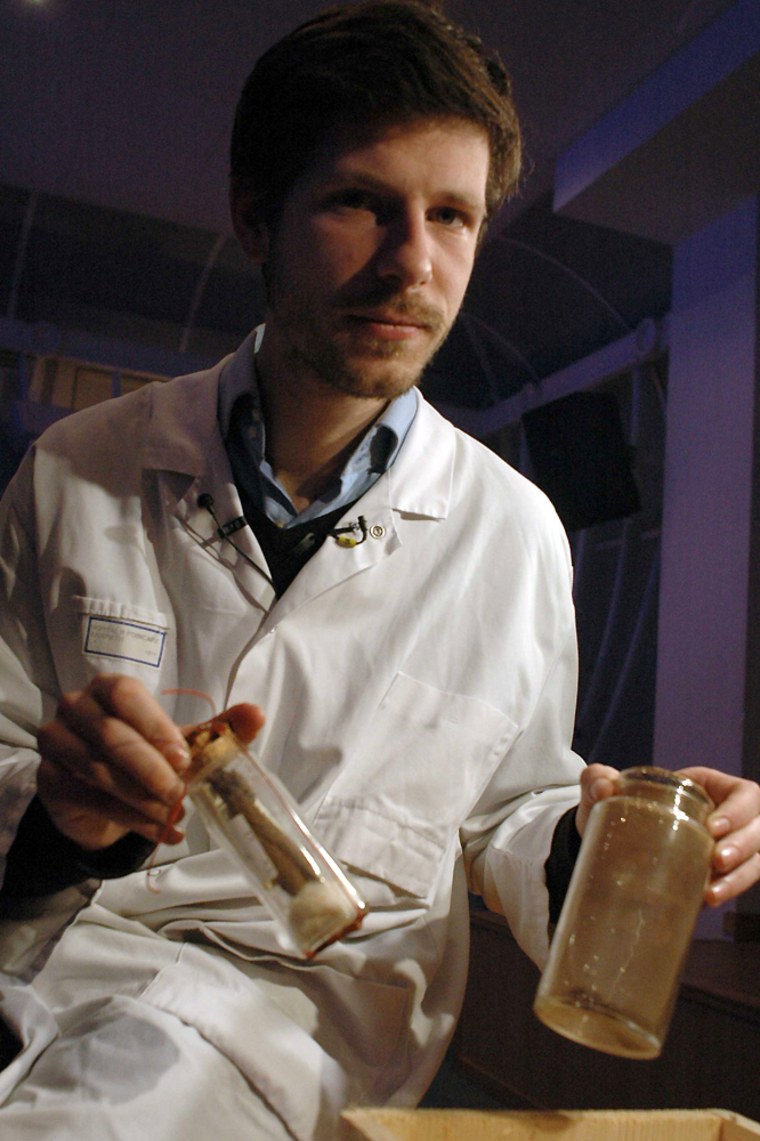A team of scientists hopes to crack one of the many layers of mystery surrounding 15th-century French heroine Joan of Arc: Are the rib and other fragments purportedly recovered after she was burned at the stake for heresy really hers?
The woman warrior-turned-saint remains omnipresent in the French imagination, nearly 600 years after her ashes were thought to have been thrown into the Seine River.
A few remains were reportedly recovered from the pyre where the 19-year-old was burned alive. A team of 18 experts now plans a battery of tests to determine whether the remains — including a rib bone and some skin — indeed belonged to her.
The results, based on recent advances in genetic research, could provide a boost for forensic scientists studying other historical remains.
The tests, which will take six months, will not be able to say with certainty that the remains are Joan of Arc's, because there is no known DNA sample from her to compare them with, said Dr. Philippe Charlier of the Raymond-Poincare Hospital in Garches, west of Paris.
But the analyses will determine with "absolute certitude" if the remains are not hers, he added, speaking at a news conference.
The complexities are numerous. Charlier said Joan of Arc was actually burned three times on May 30, 1431, following her trial in the Normandy town of Rouen. She initially died of smoke inhalation, and when she was burned a second time, her internal organs were not fully consumed by the flames. Nothing was said to remain after the third cremation except her ashes.
The rib bone, measuring some 15 centimeters (6 inches), is wrapped in a blackish substance, and is "remarkably well preserved," Charlier said.
DNA tests come first
He said they would first use DNA testing to determine whether the rib belonged to a woman. Then they will submit it to other tests to determine its exact age and to build up "a body of presumptions" to show as best as possible that it was Joan of Arc's, he said.
No DNA comparison can be done with possible descendants since Joan of Arc's genealogical tree "is probably false," he said.
Joan of Arc was tried for heresy and witchcraft and burned at the stake after leading the French to several victories over the English during the Hundred Years War, notably in Orleans, south of Paris.
The illiterate farm girl from Lorraine in eastern France disguised herself as a man in her war campaigns and said she heard voices from a trio of saints telling her to deliver France from the English. Joan of Arc was beatified in 1909 and made a saint in 1920.
Where the remains came from
The supposed remains were gathered up by an unidentified person and conserved by an apothecary until 1867, before being turned over to the archdiocese of Tours.
In 1909, scientists declared it "highly probable" that the remains were Joan of Arc's. Given developments in genetic technology in recent years, the researchers at Garches decided to try again.
"If we can make genetic prints, even on a substance partly charred, that could permit us to use the same technique in the future, because for now that is difficult," said Michel Durigon, a forensic scientist at the Garches hospital.
This will not be the first time Charlier has dabbled in the uncertainties of France's past. Last year, he was able to identify the cause of death of Agnes Sorel, the official mistress of the 15th-century King Charles VII, as mercury poisoning. But he was unable to determine whether the poisoning was a murder.
